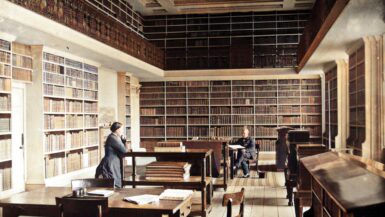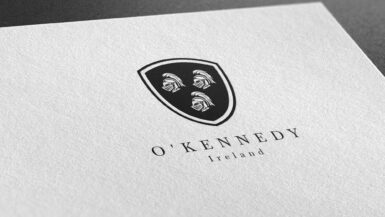The Bingham surname has its roots in English history, particularly associated with the toponym of Melcombe Bingham in Dorset. However, its significance in Irish history began with the arrival of Richard Bingham in the 16th century. Richard, hailing from Dorset, was appointed the governor of Connaught in 1584, marking the beginning of the Bingham family’s influence in Ireland.
Etymology and Meaning
Originally an English (Dorset) and Irish (County Mayo) habitational name, the surname Bingham can be traced back to Nottinghamshire. The name possibly derives from the Old English folk-name “Bynningas” (indicating a group associated with a person named Bynna) or from “bing,” a term for a kettle-shaped hollow, combined with “hām,” meaning homestead. Another interpretation links it to the Norse-Viking word “bingr,” a manger or byr, coupled with the Old English “ham,” a farm or homestead.
Earliest Known Usage
The earliest recording of the Bingham name was in the Domesday Book of 1086 as “Binggheham,” evolving to “Bingeham” by 1165. This locational naming was initially for the lord of the manor, as in the case of William de Bingeham in 1175.
Geographic Distribution
Originally from Nottingham and Dorset in England, the Bingham name spread to various regions, including Ireland, where it became significant in the 16th century.
Original Geographic Location
The original location of the Bingham surname is the village of Bingham in Nottingham, with significant historical presence in Dorset, England.
Migration Patterns
Richard Bingham’s arrival in Ireland in 1584 as the governor of Connaught marked the significant migration of the Bingham family from England to Ireland.
Historical Context
Notable Historical Events
The Binghams played a pivotal role in various historical events, particularly in County Mayo, Ireland. Key figures such as the Lords and Earls of Lucan were instrumental in local politics and societal developments.
Involvement in Key Moments in History
The Binghams, especially as the Lords and Earls of Lucan, were deeply involved in the socio-political landscape of Ireland. Their influence was felt in various aspects, including land ownership, governance, and social welfare systems.
Notable Irish Bearers of the Surname
Famous Individuals
Notable figures include George Charles Bingham, the third Earl of Lucan, a significant military and political figure, and Sir Richard Bingham, the governor of Connaught.
Influential Figures
The family’s influence extended through various generations, with members like Lord Lucan, The Fourth Earl, known for his more compassionate approach towards tenancy and local welfare.
Variations of the Surname
Spelling Variations
Over time, the spelling of the Bingham surname has seen variations like “Binggheham,” “Bingeham,” and “Byngham,” reflecting the linguistic shifts over the centuries.
Regional Differences
The name has adapted slightly differently in regions outside Nottinghamshire, especially in Irish contexts, where it assimilated into local naming conventions.
Current Statistics and Distribution
Frequency and Global Distribution
The Bingham surname, while rooted in English history, has a widespread presence, particularly in Ireland and other English-speaking countries.
Changes Over Time
The distribution and frequency of the surname have evolved, reflecting the family’s migration and societal changes over the centuries.
Family Coat of Arms
The Bingham family crest features a blue shield, a significant yellow diagonal line with two smaller adjacent yellow lines, and six yellow Cross Pattees. The blue shield symbolizes loyalty and truth, while the yellow (or gold) diagonal lines represent generosity. The Cross Pattees, often associated with military service, signify military honor and prowess.
This article offers a comprehensive view of the Bingham surname, tracing its origins, historical significance, and enduring legacy, particularly from an Irish historical perspective.






Leave a reply